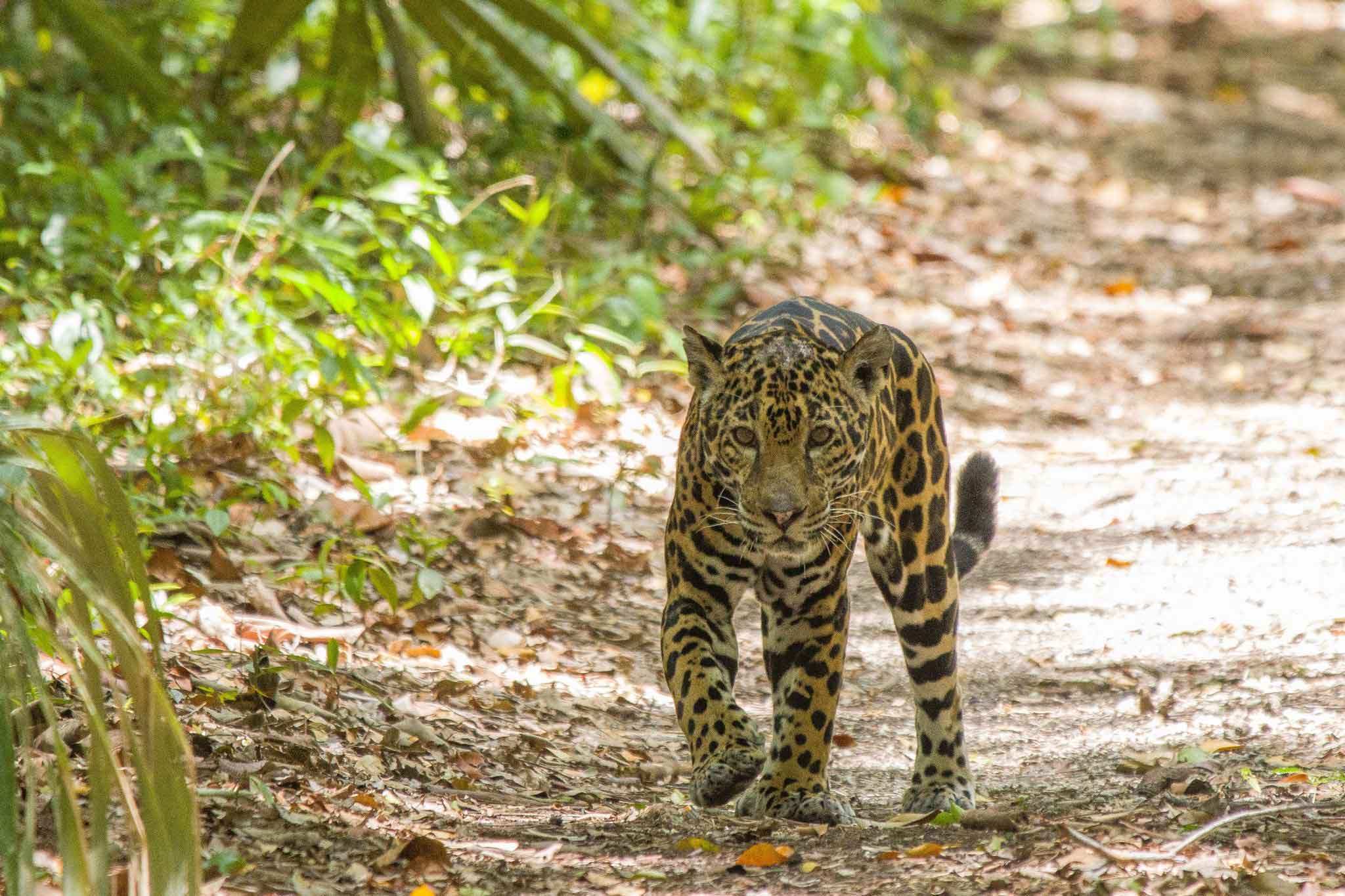The jaguar in Central America and the efforts to protect this emblematic species
- The jaguar (Panthera onca) is the largest feline on the American continent. It is listed as Near Threatened on the International Union for Conservation of Nature (IUCN) red list.
- The importance of this animal led to its declaration as an emblematic species for the entire continent, by including it in appendices I and II of the Convention for the Conservation of Migratory Species of Wild Animals (CMS), which prioritizes its conservation status in all the countries of America.
The jaguar (Panthera onca), weighing between 30 to 100 kilos, is the largest feline in America. It is distributed throughout the continent, from the southern United States, Mexico and Central America to South America. It is considered extinct in El Salvador, Chile, and parts of the US, and is currently estimated to occupy only 46% of its historical range.
Their period of activity depends on the availability of their prey, they can attack day and night. They are terrestrial, although they climb trees well, and they are also good swimmers.
Due to its high sensitivity to changes in the forest cover of its habitat and in the populations of its prey, as well as variations in water sources, its presence is considered a good indicator of the conservation status of ecosystems. It is also known as an “umbrella species”; since when it is protected, it also protects a large number of species with which it coexists.
The protection of the jaguar is one of the keys to the conservation of areas such as the Mayan Forest, and other important forests and biological corridors in Central America. This plays an important role in regulating the populations of other species.
Last February, during the thirteenth Conference of the Parties to the Convention on the Conservation of Migratory Species of Wild Animals (CMS), 18 countries of the continent approved the implementation of the Roadmap for the Conservation of the Jaguar in the Americas 2030, and thus include it in Appendices I and II of the CMS.
According to these appendices, American jaguars will have stricter protection, like all endangered migratory species, and will benefit from greater international cooperation and conservation actions.
Due to its transboundary characteristics and its great impact on the ecosystems in which it inhabits, today the jaguar is considered an emblematic species, and each nation is committed to making all necessary efforts to protect it, as well as its habitats and the prey from which it It depends.
In search of balance
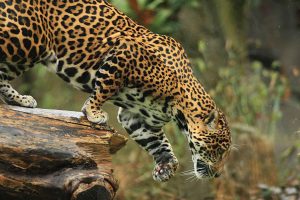
The jaguar is the largest feline in all the American continente. Photo: Jonfunk/Flickr
The premise of this initiative is: if the jaguar is protected, all the life on which it depends is also protected. Across the continent there are 30 priority landscapes detected, known as Jaguar Conservation Units (JCU’s). The idea is to connect them to form a single ecological unit, the Jaguar Corridor.
According to the initiative document, the success of this strategy depends on achieving intersectoral work (protected areas and production zones) at different levels (landscape, national, cross-border and regional level). Countries should stimulate sustainable development, reduce jaguar-human conflict in human-dominated landscapes, and increase the security and connectivity of the nuclei of protected areas.
“Many of us have seen beautiful plans with zero impact,” said John Polisar, jaguar advocate and WCS Jaguar Program coordinator. In a publication made for National Geographic, he affirms that humanity must understand that we are not the only inhabitants of the planet who depend on the productivity of the earth, and that although, as a species we must prosper, “we also need to maintain a space for plants and animals of the natural world ”.
While there are currently several serious threats to jaguar conservation, there are also many efforts, public and private, that give us hope. “Maintaining the current forest cover and populations at current levels is already a gain,” said Polisar.
For Mesoamerica, the five great forests, which are part of the Mesoamerican Biological Corridor, will also be part of this Jaguar Corridor. In all of them, according to their characteristics, actions are carried out that benefit the subsistence of the jaguars and the ecosystems on which they depend. The JCU’s of the region are Selva Maya between Mexico-Guatemala and Belize, La Moskitia between Honduras and Nicaragua, Indio-Maiz-Tortuguero between Nicaragua and Costa Rica, La Amistad between Costa Rica and Panama, and Darien between Panama and Colombia.
Central America and its jaguar protection efforts
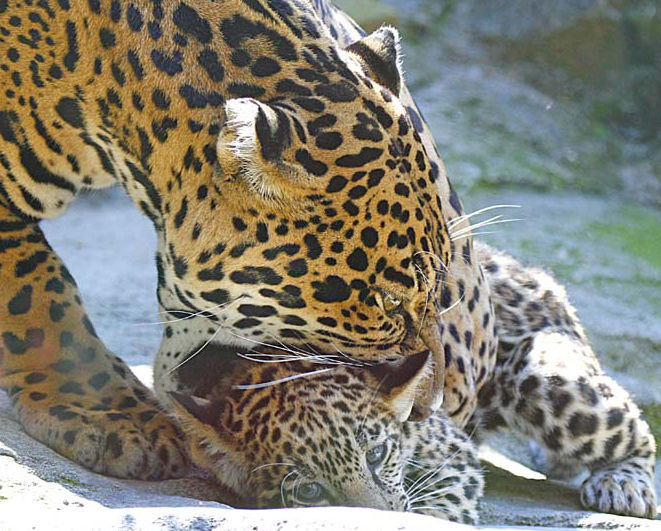
The jaguar’s conservation status in Guatemala’s Maya Biosphere Reserve is one of the best, says Francisco Asturias, a Guatemalan conservationist.
“The current situation of the jaguar in the Maya Biosphere Reserve (MBR) is one of the best that exists in the protected areas of Mesoamerica,” said Francisco Asturias, a renowned Guatemalan conservationist. Both he and Polisar agree that what is done in the Mayan Forest (Mexico-Guatemala-Belize) is of benefit to the jaguar and its ecosystems.
According to studies carried out by WCS Guatemala, is estimated that there are 1.5 jaguars per 100 km2 in the MBR, a figure comparable to the population estimate in South America (1.95/100km2). In this country, it is the community forestry model that frames all conservation strategies to the north. They keep 33% of the total national forest cover, which benefits the wildlife that lives within this protected area.
In Belize, in 2019, the government declared the creation of the Maya Forest Corridor, which connects two large protected areas, the Manatee Forest Reserve and the Rio Grande Conservation and Management Area. These two areas are neighbors of the Mayan Mountains and the Mayan Low Forests, or the Mayan Jungle, which Belize shares with Guatemala and Mexico. This entire area is 20 kilometers long and 7 kilometers wide. Within this great corridor are small protected areas such as the Monkey Bay Wildlife Sanctuary and the Laboring Creek Jaguar Corridor, which had been created with the same objective of giving jaguars undisturbed passageways.
“Internationally, people are happy about the creation of the corridor in Belize. Now, it is necessary to create mechanisms that allow the exchange of information between countries ”, said Bart Harmsen, a Dutch researcher and biologist, member of the Panthera organization. The idea of this corridor, and the desire to build common policies, is to take actions that are in line with the cross-border habits of certain species, such as the jaguar.
There is even photographic evidence of this constant migration. In 2009 and 2011, with camera traps, a jaguar known as a Short-tail was captured in Belize. Then, in 2013, he was caught in Guatemala and in 2014 back in Belize. It was not until 2018, in a conference between experts from both countries, that they realized that it was the same individual, the first cross-border jaguar registered in the area.
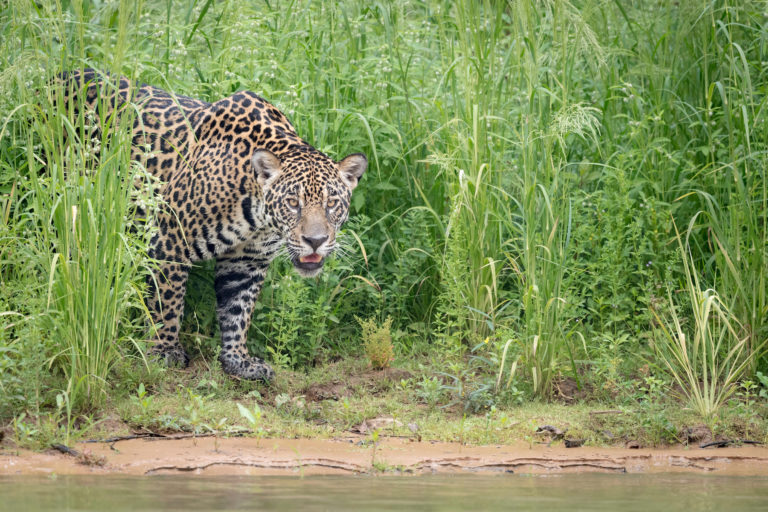
The Pantanal, in Brazil, is one of the areas with the highest density of jaguars in the entire American continent. Photo: Richard Barrett / WCS London
In Honduras, with the support of UNDP in that country, in 2018 the first scientific investigation on the jaguar was reported in the department of Yoro, which was carried out in the Texiguat Wildlife Refuge and the Montaña de Yoro and Pico Pijol National Parks. Through the installation of camera traps, it was possible to establish the presence of the five species of felines registered in that country. Puma concolor, Leopardus pardalis, Leopardus wiedii, Puma yagouaroundi and Panthera onca
With this investigation it was confirmed that in addition to Moskitia, the jaguar is present in different forested areas of Honduras. “(The Yoro sector is) outlined as an alternative corridor that could alleviate the threat faced by the jaguar in the face of growing urban-industrial and agro-industrial development between the cities of San Pedro Sula, Puerto Cortés and Tela,” said UNDP. This opens the doors to the creation of the Yoro Biological Corridor, which would benefit Honduran conservation policies.
The work carried out in Costa Rica must also be highlighted. An article published by Mongabay LATAM, says that genetic studies are carried out to determine factors such as the genetic diversity of wild cat populations in the country. Researchers have collected samples of feces, hair, tissue, blood and bones from run over felines.
These samples have been collected since 2010. Initially, they were sent to New York for analysis, but now this is carried out at the University of Costa Rica. All these efforts also seek to know patterns of behavior, eating habits and population distribution, both within and outside the borders of the Central American country.
According to Roberto Salom, director of the Jaguar program for Mesoamerica and director of Panthera for Costa Rica, one of the main objectives of these genetic studies is to be able to find physical barriers (roads, land use, etc.) to the flow. genetics of jaguars, and the rest of the felines that inhabit the country, and know “why the populations are still connected in some way.”
Real threats
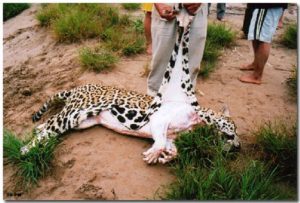
The skin, bones, fangs and other parts of the jaguar are part of an illegal market sponsored by China. Photo: Diego Shoobridge/Parkswatch
All this should not make us forget that the jaguar, like thousands of animal species on the planet, is in serious danger of disappearing, particularly due to human actions against its life and that of its environment. Loss of ecosystems and the reduction of biodiversity, illegal hunting, the increase in jaguar-human conflicts and little investment, or interest, on the part of governments, are the dangers that jaguars run today.
Add to that a growing threat: the illegal trafficking of jaguar parts to Asian markets, especially from China. There are cases in Peru and other South American countries, where there is already evidence of a black market for trafficking in jaguar bones, teeth and skins.
“There are markets that are growing exponentially towards China,” said Asturias. “We already have reports that headless jaguars have appeared on the Mexico-Guatemala border, through the Lacandon jungle. All these are indicators that this illegal traffic is already entering our country ”.
The COVID-19 pandemic has come to highlight the weakness of states in protecting their natural heritage. “The reasons that Asians take advantage of to promote these illegal actions are poverty and the corruption of our authorities,” Asturias added.
In Guatemala, for example, conservation entities have seen a reduction in their budget, which translates into a reduction in the number of personnel in charge of protecting natural areas. And that is another of the great threats to the success of the continental strategy to protect the jaguar. Polisar mentioned that “inadequate public investment” translates into dangers for wild species. “There are resources, but they don’t end up where they are supposed to go,” he said.
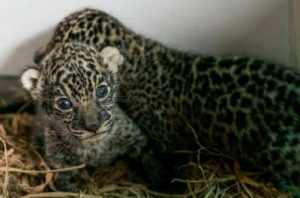
Across the continent, efforts to protect the jaguar will be maximized. Photo: EFE
But, the WCS expert on jaguars also admitted that the spirit of the Road Map for the Conservation of the Jaguar in the Americas 2030 is to recognize the efforts that are already being made today, through incentives, training and support in the protection of critical areas.
“We have verified that in productive forests, with adequate forest management, or in environmentally friendly farms and indigenous territories, the coexistence of jaguars and humans can flourish,” he said.
WCS Guatemala, in conjunction with other institutions, such as the US Fish and Wildlife Program (USFWS), produced a manual called “Living with the jaguar”, with the aim of informing people about jaguar-friendly practices and other carnivorous felines. “On the road that leads to Tikal, you can see signs that say” Farms friendly to the jaguar “, which is a project that we work with many farmers in the area and with the Ministry of Agriculture and Livestock (MAGA),” said García .
With the declaration of the jaguar as an emblematic species of the continent, its conservation is shown as an excellent reason to teach resilience to communities and the productive sector.
It is also an excellent ally in the struggle to achieve the United Nations development goals (sustainable management of forests, reduction of ecosystem degradation and responsible production). “It helps to emphasize the importance that jaguar conservation has in sustainable energy, agriculture and infrastructure expansion plans in countries,” concluded Polisar.
